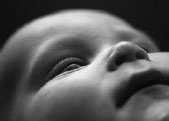Illinois Law and Guidelines

Illinois Law
- Hearing Screening for Newborns Act (Public Act 099-0834)
By December 31, 2002, all hospitals performing deliveries shall conduct hearing screening of all newborn infants prior to discharge. (Section 5. Mandatory hearing screening.)
- Illinois Administrative Code: Universal Newborn Hearing Screening Program (Title 89, Ch.IV, § 504)
- Summary of Illinois Universal Newborn Hearing Screening Legislation
- Cytomegalovirus (CMV) Public Education (Public Act 099-0424) (pdf)
- CMV Memo to birthing hospitals from the Illinois Department of Public Health (pdf)
Illinois Guidelines
- American Academy of Audiology Pediatric Guidelines
- American Speech and Hearing Association Pediatric Guidelines
Vision
Signs that a young child may have vision problems

Newborns can see best at a distance of only 8 to 14 inches. A newborn can see things further away, but it is harder for him to focus on distant objects. Still, a light shining from faraway may catch his eye, and he may stare at another family member moving around the room.
After human faces, brightness and movement are the things infants like to look at best. Although a newborn's sight is functioning, it still needs some fine tuning, especially when it comes to focusing far off. His eyes may even seem to cross or diverge (go "wall-eyed") briefly. This is normal, and your newborn's eye muscles will strengthen and mature during the next few months.
A newborn is better equipped to see contrasting colors than colors similar to one another. Black-and-white pictures or toys will keep his interest far longer than objects or pictures with lots of similar colors.
Knowing that your newborn sees and enjoys seeing should prompt you to give him lots of interesting sights to look at, but don't overload him. One item at a time is plenty. And don't forget to move your baby around a bit during the day.
You'll be providing a needed change of scenery to your little looker.
Signs that a young child may have vision problems include:
- constant eye rubbing
- extreme light sensitivity
- poor focusing
- poor visual tracking (following an object)
- abnormal alignment or movement of the eyes (after 6 months of age)
- chronic redness of the eyes
- chronic tearing of the eyes
- a white pupil instead of black
Children with hearing loss are at greater risk for visual problems. Consult a pediatric eye care specialist if your child has been diagnosed with a hearing loss.
Adapted from KidsHealth Your Child's Vision
Printer-friendly: VisionProblems (pdf)



